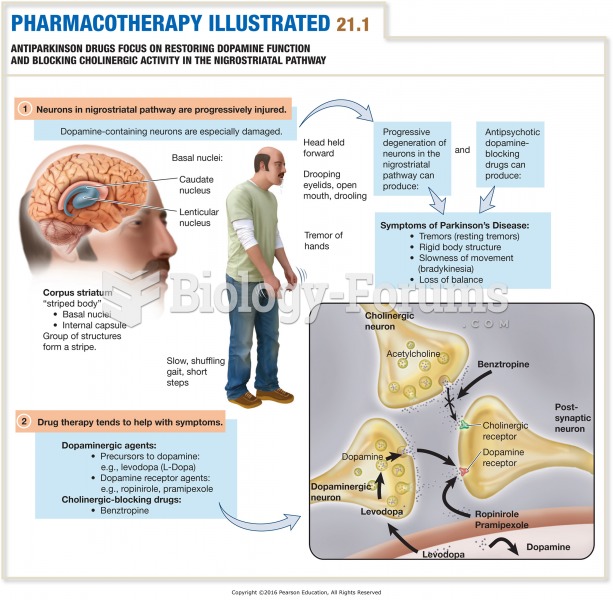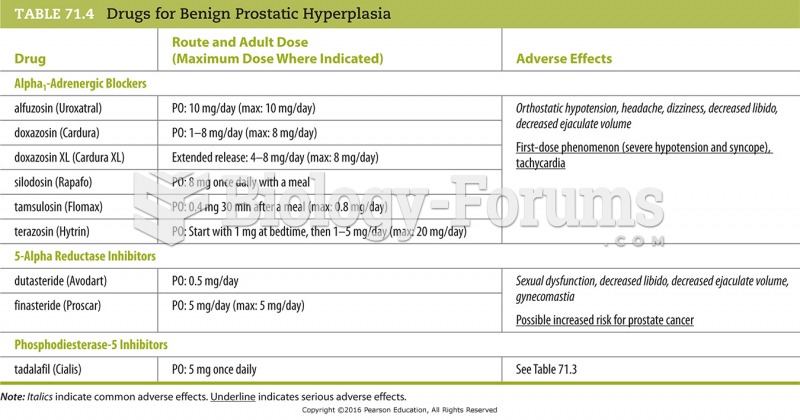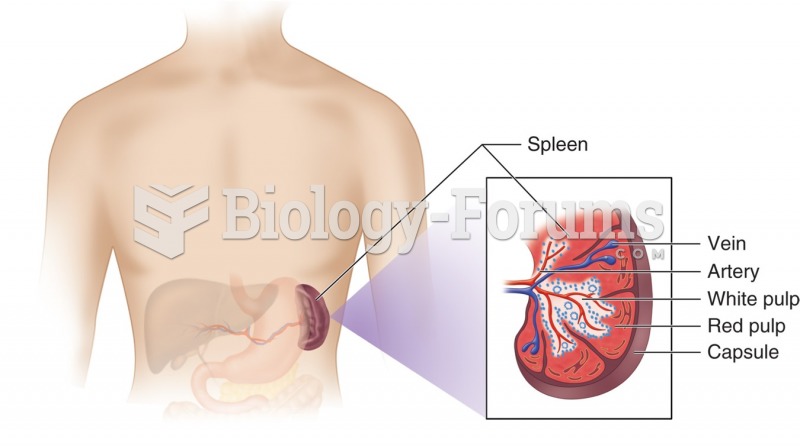Answer to Question 1
The most commonly used narcotic drugs in the United States are the opiates (such as opium, heroin, and morphine). The term narcotic means sleep inducing. In actuality, drugs classified as narcotics are more accurately called analgesics, or painkillers. The principal effect produced by narcotic drugs is a feeling of euphoria. The opiates are all derived from the opium poppy, which grows in many countries. Morphine is the main active ingredient of opium.
Opiates affect the central nervous system and produce feelings of tranquility, drowsiness, or euphoria. Overdoses can cause convulsions, coma, and in rare cases, death by respiratory failure. All opiates are now recognized as highly addictive. Heroin is the most widely abused opiate. In addition to the aforementioned effects, heroin slows the functioning parts of the brain. The user's appetite and sex drive tend to be dulled. Opiate addiction occurs when the user takes the drug regularly for a period of time. Whether addiction will occur depends on the opiate taken, the strength of the dosages, the regularity of use, the characteristics of the user, and the length of time taken. The withdrawal process is very unpleasant. Symptoms include chills, cramps, sweating, nervousness, anxiety, runny eyes and nose, dilated pupils, muscle aches, increased blood pressure, severe cramps, nausea, and fever. Most addicts are obsessed with securing a fix to avoid these severe withdrawal symptoms. Unsanitary injections of heroin may cause hepatitis and other infections. Communal use of needles can spread AIDS. Also, the high cost of maintaining a heroin habit-often more than 100 daily-may create huge financial problems for the user. Because the price of illicit narcotic drugs is so high, organized crime has made huge profits in the smuggling and distribution of these drugs. Often narcotics are diluted with dangerous impurities, which pose serious health hazards for the users.
Answer to Question 2
The following drugs are classified as depressants:
Barbiturates, which are derived from barbituric acid, depress the central nervous system. They are commonly used to relieve insomnia and anxiety, to treat epilepsy and high blood pressure, and to relax patients before or after surgery. Barbiturates are illegal unless obtained by a physician's prescription. Taken in sufficient doses, barbiturates have effects similar to strong alcohol. Physiological effects of barbiturates include slurred speech, disorientation, staggering, confusion, drowsiness, and impaired coordination. Prolonged heavy use of barbiturates can cause physical dependency, with withdrawal symptoms similar to those of heroin addiction. Withdrawal is accompanied by body tremors, cramps, anxiety, fever, nausea, profuse sweating, and hallucinations. Many authorities believe barbiturate addiction is more dangerous than heroin addiction, and it is considered more resistant to treatment than heroin addiction. Abrupt withdrawal can cause fatal convulsions.
Barbiturate overdose can cause convulsions, coma, poisoning, and sometimes death. They are also the most popular suicide drug.
Tranquilizers are usually taken orally, and the effects last 4 to 8 hours. Side effects include slurred speech, disorientation, and behavior resembling intoxication. Overdoses are possible and result in cold and clammy skin, shallow respiration, dilated pupils, weak and rapid pulse, coma, and possibly death. Withdrawal symptoms are similar to those from alcohol and barbiturates: anxiety, tremors, convulsions, delirium, and sometimes death.
Quaalude and phencyclidine (PCP) are depressants. (PCP also produces effects similar to those of hallucinogens.) Methaqualone (better known by its patent name, Quaalude) resembles barbiturates and alcohol in its effects, although it is chemically different. It has the reputation of being a love drug because users believe it makes them more eager for sex and enhances sexual pleasure. Quaalude also reduces anxiety and gives a feeling of euphoria. Users can become both physically and psychologically dependent. Overdose can result in convulsions, coma, delirium, and even death. Most deaths occur when the drug is taken together with alcohol, which vastly magnifies its effects. Withdrawal symptoms are severe and unpleasant. Abuse of the drug may also cause hangovers, fatigue, liver damage, and temporary paralysis of the limbs. PCP was developed in the 1950s as an anesthetic, but this medical use soon ended because patients displayed symptoms of severe emotional disturbance after receiving it. PCP is legal today only for tranquilizing elephants and monkeys, which apparently do not experience the adverse side effects. PCP is a very dangerous drug. It distorts the senses, disrupts balance, and leads to an inability to think clearly. Larger amounts of PCP can cause a person to become paranoid, can lead to aggressive behavior (even violent murder), and can create temporary symptoms of a severe emotional disturbance. Continued use can lead to the development of a prolonged emotional disturbance. Overdose may result in coma or even death. Research has not as yet concluded whether PCP induces physical or psychological dependency. An additional danger of PCP is that even one-time users sometimes have flashbacks in which hallucinations are reexperienced, even long after use has ceased.







